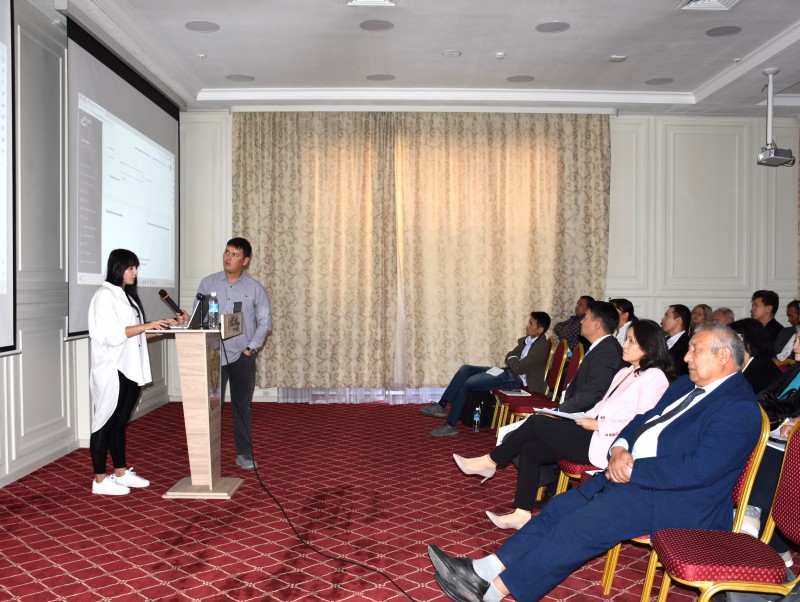
The presentation of the irrigation water distribution system among the members of water user associations took place at a round table organized by the PF "CAMP Alatoo." The event was attended by representatives of the Water Resources Service under the Ministry of Agriculture of the Kyrgyz Republic, district water management authorities from all regions of the country, Water User Associations of the Chui region, the scientific community, non-governmental, and international organizations.
The information system became one of the main products of the project on adapting and strengthening community-based water resource management approaches, which "CAMP Alatoo" worked on with the support of the USFS (United States Forest Service) and Management and Engineering Technologies International (METI).
The software was developed based on the analysis of Water User Associations' activities and issues identified during a survey of around 780 water users and employees of 30 Water User Association directorates. The responses obtained during the interviews revealed the difficulties and challenges facing the Water User Associations and consumers: (1) lack of professional knowledge and experience among Water User Association staff in water resource management; (2) water shortage and its irrational use; (3) lack of stable crop planning and non-compliance with irrigation norms; (4) outdated irrigation systems. Summarizing the research results, specialists concluded that sustainable water resource management requires effective planning, coordination between farmers and Water User Associations, as well as investments in infrastructure rehabilitation and the adoption of modern technologies.
The information distribution system, representing a web resource, is designed to partially address the identified problems. One of its main functions is to generate an electronic queue for irrigation, taking into account the daily hydromodule – an indicator that determines the water needs of crops. The system authors explained that during the Soviet period, collective farms relied on the "decadal hydromodular zoning" method, which involved supplying water to large land areas every 10 days. In the new conditions, this method became obsolete due to the emergence of private farms, where farmers began to grow crops of their choice. Uzbek water specialists replaced the decade-long period with a daily one to ensure irrigation of small land plots. This experience was used in creating the irrigation water distribution information system for Water User Associations in Kyrgyzstan.
To launch the system and create an electronic queue, Water User Association staff need to enter data on farmers, the areas of their land plots, the types of crops grown, irrigation schedules, the number of irrigations during the growing season, and the availability of internal irrigation networks – furrows, channels, and their capacity – on the website. After processing the information, an online calculator will calculate the irrigation queue. During the development and testing of the system, specialists used data provided by the Water User Association "Kok-Zhyde" of the Ken-Bulun village.
"For example, if all residents of a settlement grow rice, our system, taking into account forecasts of river runoff, can calculate whether there will be enough water for irrigating this crop, or farmers will have to abandon rice cultivation this year. In the latter case, the system will suggest effective water-saving technologies," said Aislan Erlan uulu, project specialist at "CAMP Alatoo." The example given reflects the main idea of the innovation, which is to provide Water User Associations with a modern method for calculating irrigation water volumes for the season and the ability to recommend crop planting to farmers based on their water consumption.
Representatives of regional Water User Associations were familiarized with the information system during exchange visits. Recommendations and additions expressed by association employees were taken into account in the final stage of system development. In the future, the irrigation water distribution information system will be piloted in existing Water User Associations and implemented nationwide.
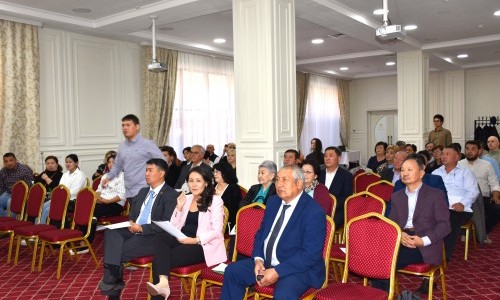
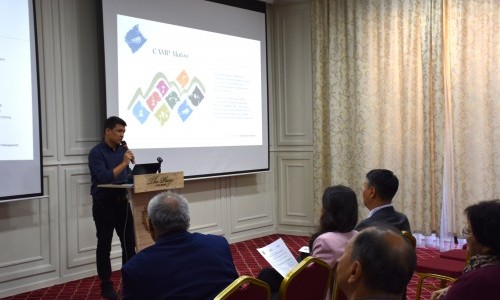
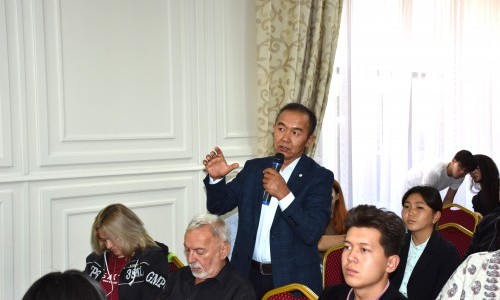
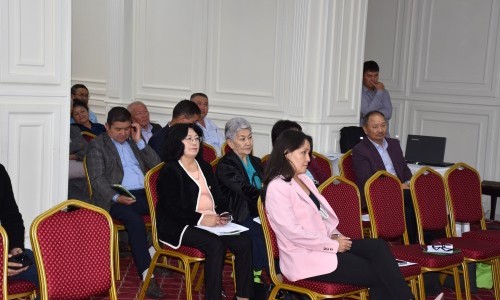
Итоги пастбищного сезона 2018 года были подведены на очередном заседании районной пастбищной комиссии (РПК).
MoreThe development of the unified method, "Monitoring Pastures at the Local Level," is nearing completion.
MoreЧетыре новых моста построены в 2018 году в Кыргызстане при поддержке ОФ “CAMP Алатоо” и Швейцарской ассоциации “Памирские...
More